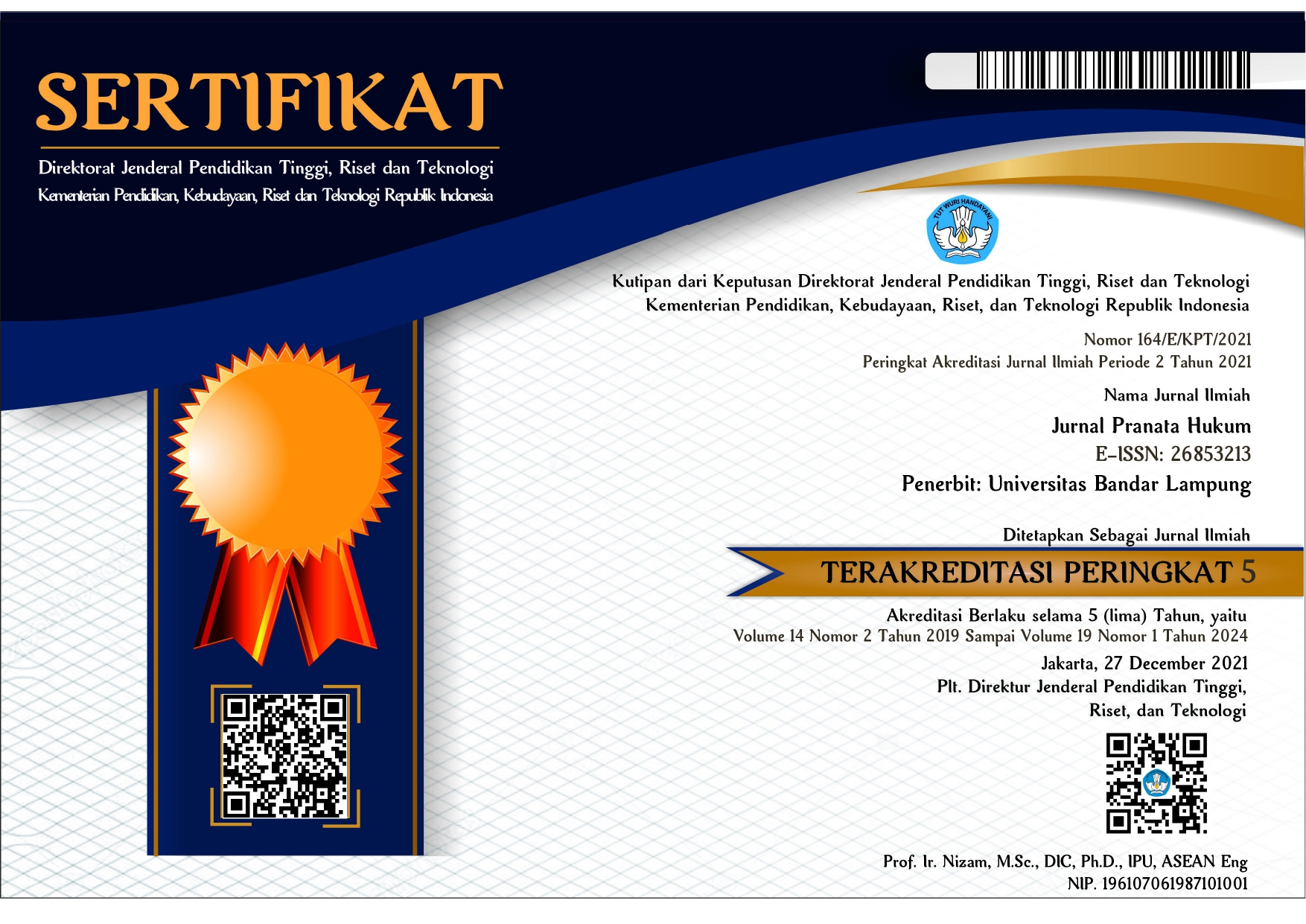THE EXISTENCE OF THE JUDICIAL COMMISSION IN SUPERVISING JUDGES IN INDONESIA
DOI:
https://doi.org/10.36448/pranatahukum.v19i1.334Keywords:
Judge, Judicial Commission, SupervisionAbstract
The Judicial Commission (KY) has the authority to propose the appointment of Supreme Court justices and has other powers in order to maintain and uphold the honor, dignity, and behavior of judges. Although the Judicial Commission as an institution that is directly regulated by the 1945 Constitution, in carrying out its duties and functions it still raises a number of institutional problems related to its position, institutional relationship with the Supreme Court (MA), and implications that arise after the decision of the Constitutional Court (MK). As for the problems in this paper: First, what are the factors that hinder the Judicial Commission in carrying out its duties and functions in supervising judges? Second, what efforts should be made to strengthen the effectiveness of the Judicial Commission in supervising judges? The research method used is normative juridical. The results in this paper are: First, the obstacles for the Judicial Commission in carrying out its duties and functions: (1) efforts to weaken the Judicial Commission's authority through judicial review of the Constitutional Court's decisions; (2) the lack of clarity regarding the position as an independent institution and the institutional relationship with the Supreme Court; (3) institutional accountability issues. Second, efforts must be made to strengthen the effectiveness of the Judicial Commission's institutions: (1) the application of "shared responsibility" between the Judicial Commission and the Supreme Court includes: promotions, transfers, professional assessment and supervision of judges; (2) strengthening the authority of KY in the recruitment of judges; (3). to streamline the supervision of judges in the regions by optimizing the performance of the liaison KY
Downloads
Downloads
Published
Issue
Section
License
Copyright (c) 2024 PRANATA HUKUM

This work is licensed under a Creative Commons Attribution-ShareAlike 4.0 International License.
All articles published in the Pranata Journal are licensed under the Creative Commons Attribution-ShareAlike 4.0 International License (CC BY-SA 4.0). This license allows others to share, copy, distribute, adapt, and build upon the work, even for commercial purposes, as long as appropriate credit is given and derivative works are licensed under the same terms.




